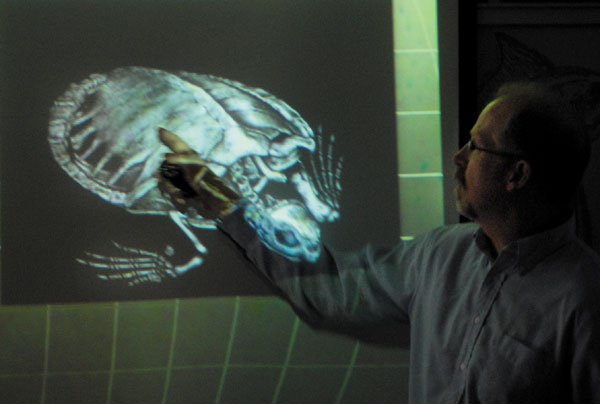Gilroy
– At Gilroy High School, video cameras are no longer just for
taping friends doing tricks on skateboards.
Gilroy – At Gilroy High School, video cameras are no longer just for taping friends doing tricks on skateboards.
On Friday, students and teachers learned that cameras would become part of the classroom experience thanks to a $14,071 Whale Tail Grant won by teacher Jeff Manker and Teri Freedman, grant writer for the Gilroy Unified School District. The California Coastal Commission award, an amount nearly three times the entire GHS science department’s projected 2006-2007 budget of $5,400, will be used to add a filmmaking component to the current marine science program, known as Ocean Steward.
“I’ve always found that the best way to learn something is to teach it to somebody else,” said Manker.
In this vein, the new funds will be used to purchase 10 video cameras, 10 computers and editing software so that students can make five-minute documentaries to screen to their peers.
As with past years, students will research one of the nine dangers to oceanic health identified by the Pew Ocean Commission. This year, however, students will not produce essays, but instead will write scripts and film them in the style of a television news report.
“It’s building on something we already do,” Manker said.
Of the 27 students in his early afternoon Thursday class, 18 reported previous experience with video cameras, filming such diverse events as family parties and hunting trips.
The GHS marine science program has more than 300 students in 10 classes taught by three teachers. As students will work in groups of four, there will be more than 75 documentaries produced.
The films will first be screened in classes, with the best going on to a school-wide film festival this June.
Junior Erin Paegelow believes the films will influence the student body.
“If it’s made by people your own age, you get a better feel for how it is,” she said.
Having an impact is important, Manker said, if only because Gilroy is just 20 miles from the beach and no more than 40 miles from any point along the Monterey Bay Marine Sanctuary coastline.
“They’re very lucky to have a marine science class because most schools don’t,” he said of GHS students. “When they’re done with this class, they’ll know more about the ocean than 90 percent of the country.”
Disseminating that knowledge is key to the class and the addition of the filmmaking component, Manker said. At the end of the year, students will post their documentary shorts to an online database and on video sharing Web sites so they can reach a global audience.
“(The ocean is) a huge source of food, weather, recreation-and our fresh water comes from the ocean,” Manker said. “We’re reliant on the ocean whether you live in Kansas or California.”













